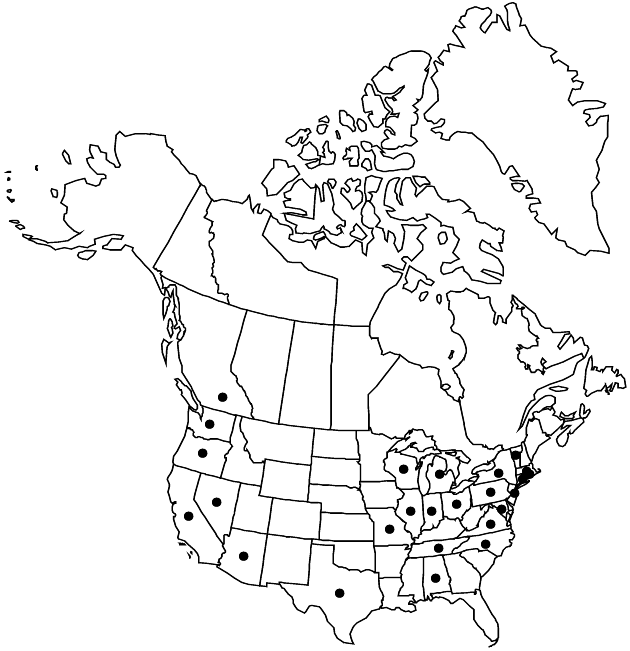Leontodon saxatilis
Fl. Franç. 2: 115. 1779.
Annuals or perennials, 10–40 cm. Stems 1–15+, ascending, simple, glabrous or coarsely hispid. Leaves: blades oblanceolate to oblong, 2–15 × 0.5–2.5 cm, margins entire, dentate, or deeply lobed, faces hispid or hirsute, hairs minutely bifid. Heads borne singly. Peduncles ebracteate. Calyculi of 10–16, subulate bractlets 1–4 mm, glabrous or hirsute. Involucres campanulate, 6–13 × 4–9 mm. Phyllaries 16–20, narrowly lanceolate, 6–8 mm, subequal, glabrate to coarsely hirsute. Florets 20–30; corollas bright yellow to grayish yellow (outer faces), 8–15 mm. Cypselae fusiform, 4–5.5 mm, (outer curved, thick, not beaked, often enclosed by phyllaries, inner beaked, beaks 1–3 mm); pappi of 2 types: on outer cypselae, crowns of bristlelike scales ca. 0.5 mm; on inner, of dusky white or pale yellow, plumose bristles 5–6 mm. 2n = 8.
Discussion
Subspecies 2 (2 in the flora).
Leontodon saxatilis is widely introduced in North America. It is identified by heads borne singly, ebracteate peduncles, glabrous or hairy leaves, and mixed pappi. Some individuals are coarsely hirsute and easily confused with L. hispidus.
Leontodon taraxacoides (Villars) Willdenow ex Mérat de Vaumartoise (1831), long used for this species, is a later homonym of L. taraxacoides Hoppe & Hornschuch (1821).
Selected References
None.
Key
| 1 | Perennials, rarely biennials; inner cypselae with beaks ca. 1 mm | Leontodon saxatilis subsp. saxatilis |
| 1 | Annuals, rarely biennials; inner cypselae with beaks 2–3 mm | Leontodon saxatilis subsp. longirostris |
